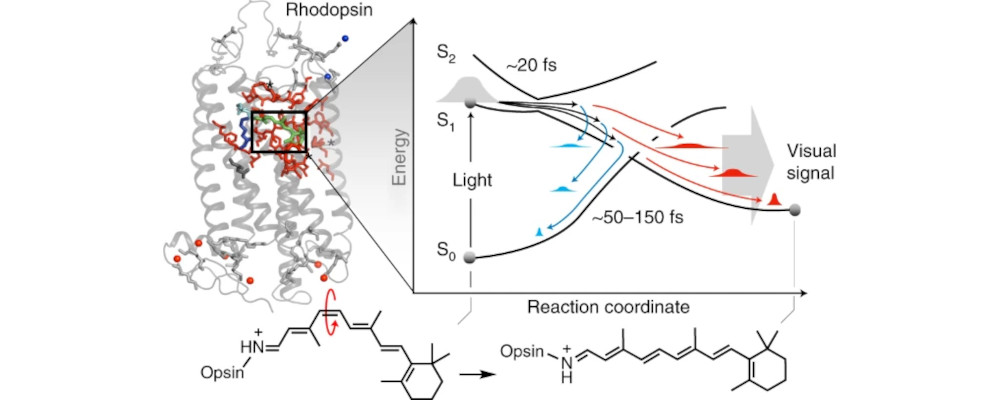The activation of rhodopsin, the light-sensitive G-protein-coupled receptor responsible for dim-light vision in vertebrates, is driven by an ultrafast excited-state double-bond isomerization with a quantum efficiency of almost 70%. The origin of such light sensitivity is not understood and a key question is whether in-phase nuclear motion controls the quantum efficiency value. In this study we used hundreds of quantum–classical trajectories to show that, 15 fs after light absorption, a degeneracy between the reactive excited state and a neighbouring state causes the splitting of the rhodopsin population into subpopulations. These subpopulations propagate with different velocities and lead to distinct contributions to the quantum efficiency. We also show here that such splitting is modulated by protein electrostatics, thus linking amino acid sequence variations to quantum efficiency modulation. Finally, we discuss how such a linkage that in principle could be exploited to achieve higher quantum efficiencies would simultaneously increase the receptor thermal noise leading to a trade-off that may have played a role in rhodopsin evolution.
Quantum–classical simulations of rhodopsin reveal excited-state population splitting and its effects on quantum efficiency

